Marble tile is such a classic choice for any home, but at the same time can be an investment. Choosing the right grout color for your marble tile can make a big difference in how it looks and feels in the space. The right grout color can enhance the marble time and make it look so natural and timeless; on the other hand, the wrong marble tile grout can be rather distracting.
In this post, I’ll share some tips and tricks on how to choose the best grout color for marble tile, my real life experience choosing grout colors for various marble tiles, plus quality grout recommendations for marble tiles.
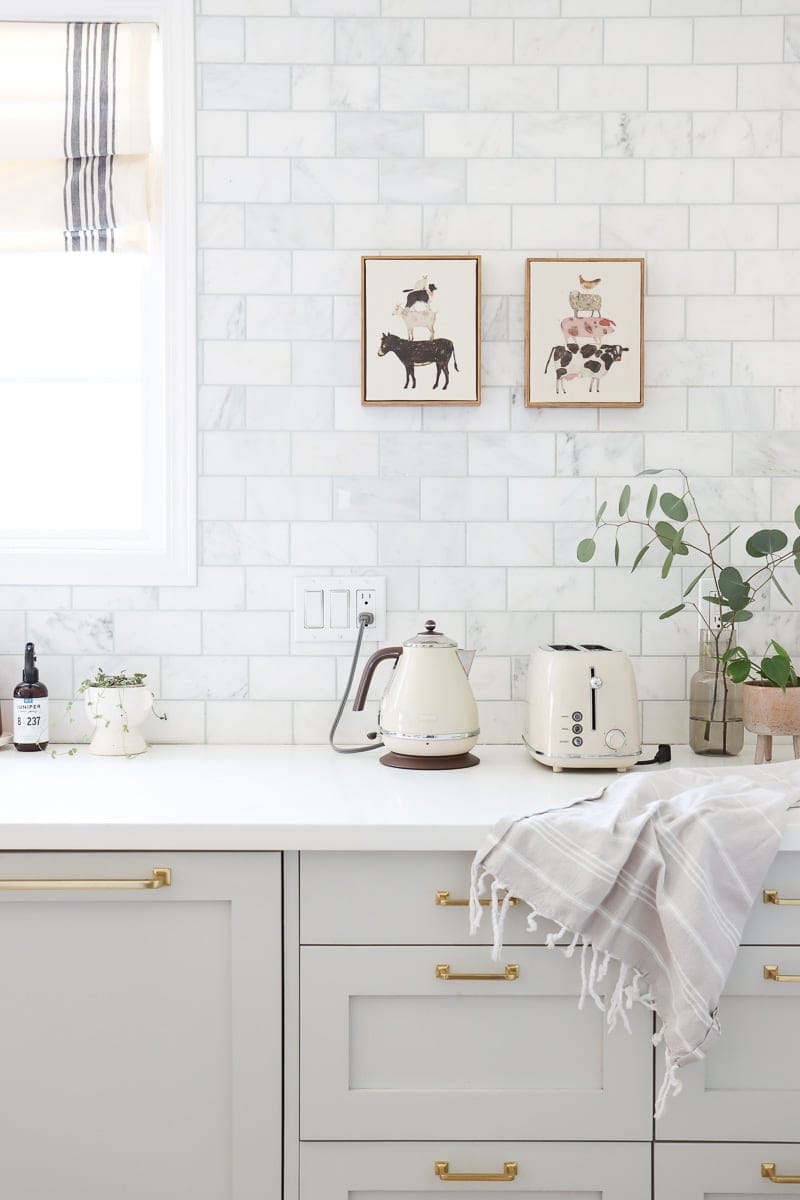
Match or Contrast the Grout Color with the Marble Tile
One of the first decisions you need to make when choosing grout color for marble tile is whether you want to match or contrast the grout color with the marble tile.
Matching grout color means choosing a grout color that is close to or blends in with the dominant color of the marble tile. Contrasting grout color means choosing a grout color that stands out or creates a visual difference from the dominant color of the marble tile.
There are pros and cons to both options. Matching grout color can create a seamless and uniform look that highlights the natural variations and patterns of the marble tile. It can also make the space look larger and cleaner. In general, a closely matching grout color can make your tiled wall feel like a single piece of marble, if that’s the look you are going after.
Contrasting grout color can create a bold look that emphasizes the shape and layout of the marble tile. It can also add some personality and interest to the space but run the risk of making the space look busy or cluttered.
So which one do I prefer and use? In my house, I’ve had four tiled walls each with a different type of marble tile. All of those four applications, I opt for matching grout color. I’m doing this for a few reasons:
- My house is relatively small, choosing a matching grout color for my marble tiles makes the same more open and appear larger
- Marble tiles often have obvious veining and pattern, so each tile already have something going on to create visual interest. With that in mind, I just don’t need grout lines to create additional interest to add more to the visual patterns to avoid it being too much.
- I generally think matching grout color is more low key, and really bring the emphasis on the natural beauty of marble itself, which is always what I want. When I was touring around some European houses, I barely saw any tiles complimented by contrasting grout, whether it is ceramic or marble, and it seems like those architects always prefer minimal grout line and low key grout color to blend in.
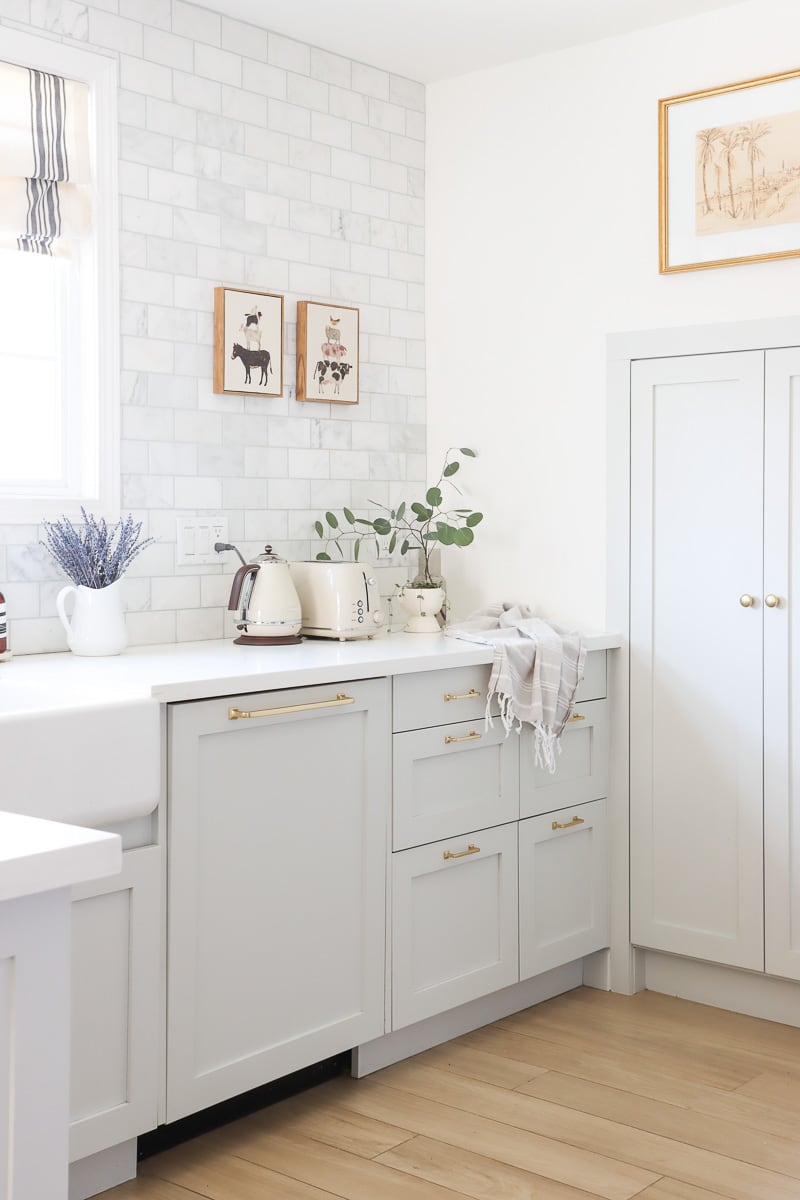
Best grout colors for different types of marble tile:
When deciding what color grout for marble tile in your remodel project, here are a few common tiles and recommended grout colors that works.
White marble tile
White marble tile generally refers to marble tiles that are light in color with a neutral hue, such as white or light gray. They are probably the most popular and versatile choice for marble tile, especially in recent years where light and airy spaces are all the rage.
For a classic and timeless look, you can choose a white or light gray grout color that matches or blends in with the white background of the marble tile.
If your marble tile is very light, such as Carrara Venato or Thassos, you can choose a white grout to blend in with the white tile seamlessly. One thing to note is there are several white grout colors, such as Avalanche and White in Mapei Flexcolor grout line(my go-to grout). So pay attention to the shade and warm/cool tone.
One caveat of choosing white grout color is the maintenance as white can show dirt easily, so I wouldn’t recommend using white grout on floors.
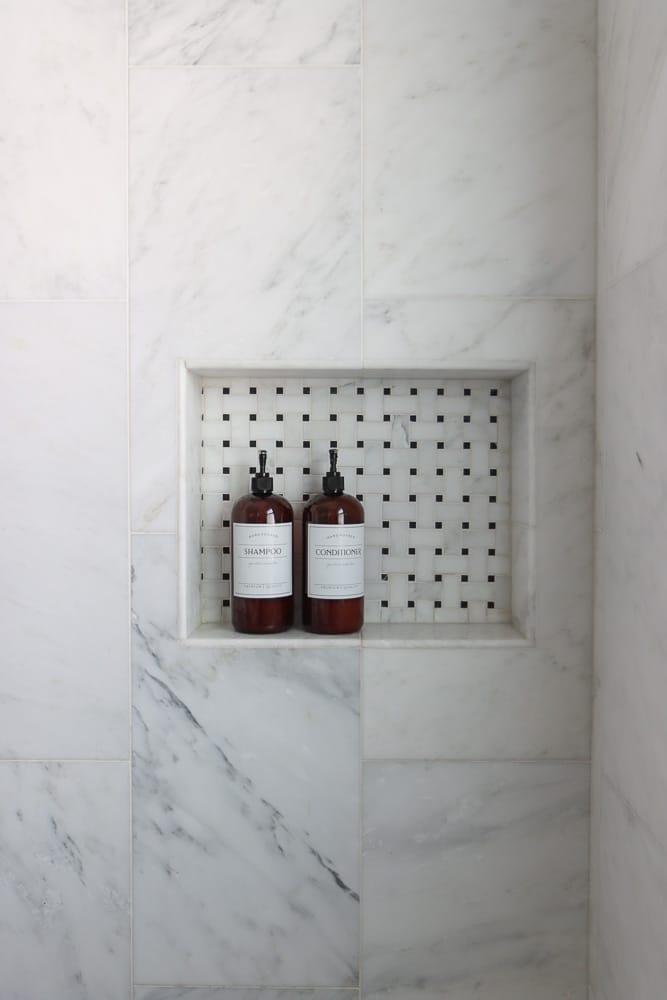

For light gray marble tiles, such as most Carrara marble tiles, a light gray color will do a better job. Either match the color tone of your tile, or choose a shade darker to make it recede.
In color theory, light colors advance, whereas darker colors recede. Generally speaking, grout is the background plus it is a bit behind the tiles, so I recommend choosing grout color a shade darker.
If you want more contrast for light color, choose a grout color that is 1-3 shades darker than the tile and you will have a tile pattern that really stands out.
Here’s a comparison of light gray carrara marble tiles with white, light gray and dark grout colors:
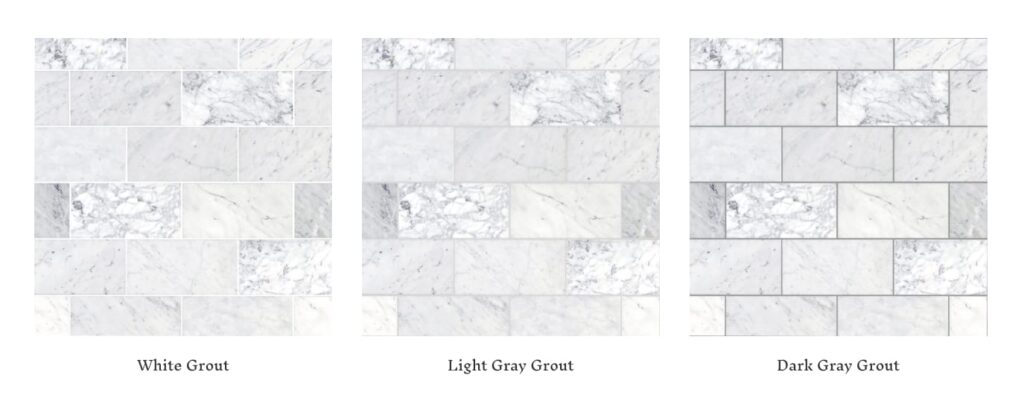
Black marble tile
Black marble tile is another popular and versatile choice for marble tile, and is more often used on the floor or in a moody space.
To match a dark marble tile and create a cohesive and sophisticated look, you can choose a black or dark gray grout color that blends in with the black background of the marble tile.
One thing to keep in mind is black doesn’t hide dirt very well. This may seem counterintuitive, so let me explain. Black is great at hiding stains as the stain is less likely to make the dark grout darker. However, dust and dirt are often in the mid tone range. So over time you might see your black grout turning a speckled gray color.
Beige and colored marble tile
Beige marble tile is a warm and cozy choice for marble til.. It can work well with neutral or earthy grout colors, such as beige, brown, tan, cream, or ivory. These grout colors can match or blend in with the beige background of the marble tile, creating a harmonious tiled surface.
Of course you can also choose a grout color that contrasts or creates a subtle difference from the beige background of the marble tile, but do keep the undertone consistent by choosing a warm grout color.
Beyond beige, there are also many beautiful marble tiles available in a wide array of colors, such as pink, blue, green, and more. These colored marble tiles create a bold look and are often more pricey than white tiles.
For colored marble tiles, the most important tip is to consider the undertones and intensity of the hues when choosing the grout color. Generally, neutral grout colors, such as gray, can work well with most colored marble tiles.
In the case of bold colored marble tiles, such as deep blue or rich green, you might consider using a grout color that matches the undertones of the marble, to create a more harmonious look. Luckily you can easily find colored grout online or in hardware stores.
Tips on choosing the best grout colors for marble tiles
Get grout samples
One of the best ways to test grout color samples with marble tile samples is to use a grout sample stick. A grout sample stick is a thin piece of plastic that is in the same colors as grout.
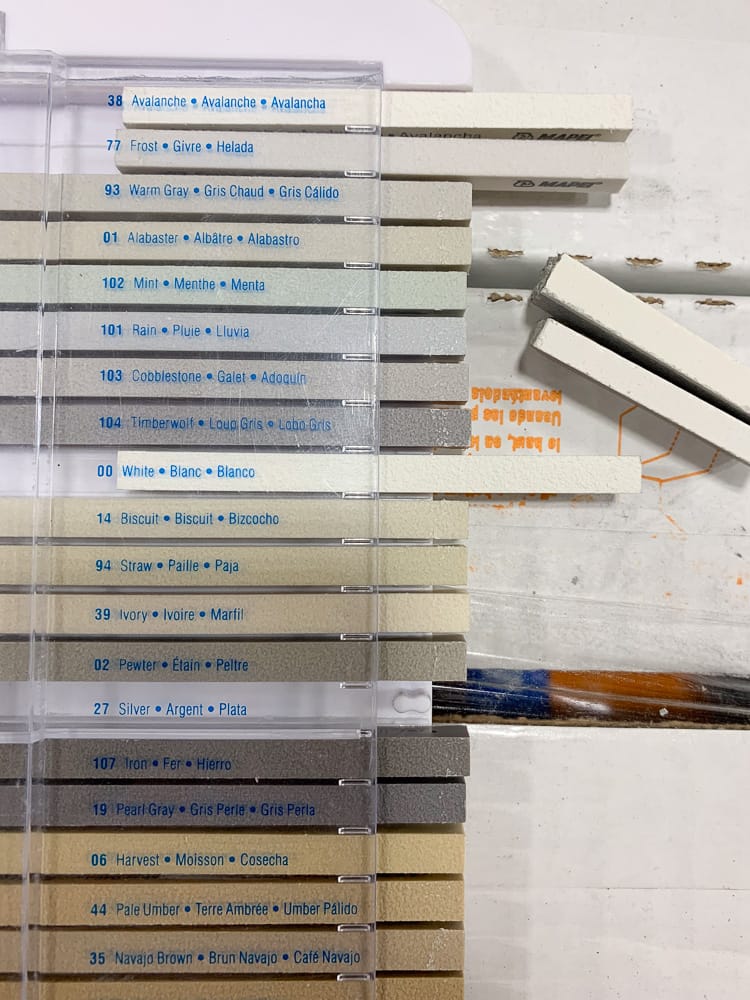
If you are working with a tile professional, they likely will have a set of grout samples from the brand of their choice. Before the day of grouting, they may show you the sample grout colors, and let you choose the color.
If it is too stressful to decide on the spot, you can always ask to keep the sample box with you, so you can take your time to compare all the grout samples with your tile.
I recommend you do this as early as possible, so you can observe the grout sample + marble tile combos and see it in different lighting conditions. That way you’ll have ample time to choose the best grout color for your marble tile.
If your tiler doesn’t have a grout sample box, or you are DIYing tiling for your home, you can always bring your tile with you and match it to the grout samples in your local hardware store.
Sometimes you won’t see the grout samples on display but just ask for the store assistant and they may have it in the store. When I was trying to find the best grout color for my carrara field tiles, the store assistant showed me the grout samples which really helped me narrow down my selection.
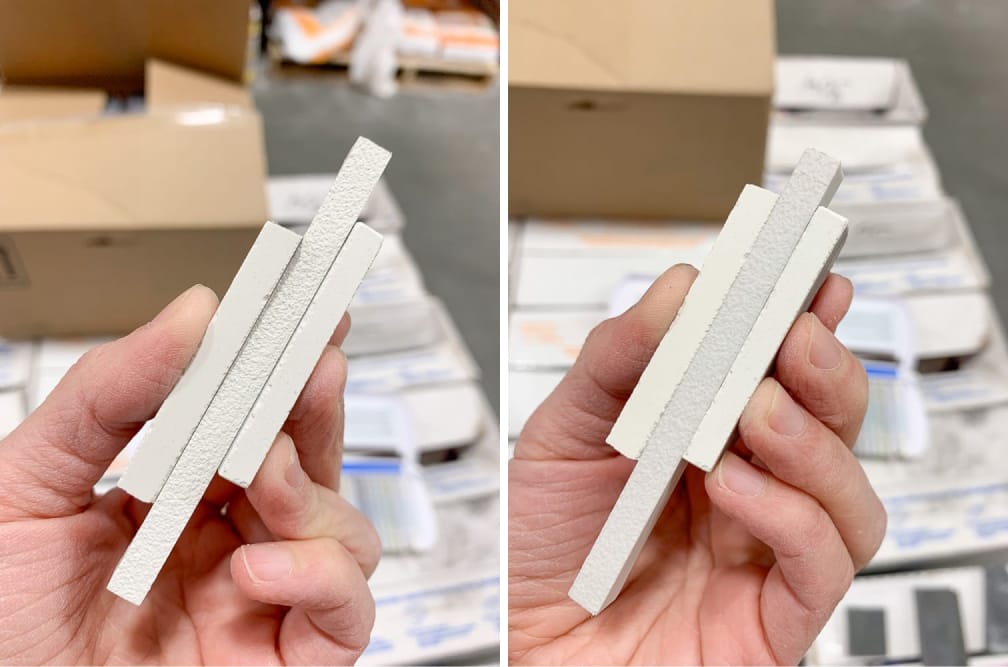
Grout will dry lighter
Before finalizing your grout color choice, it’s essential to keep in mind that grout tends to dry lighter than its wet appearance. This is a common characteristic of grout due to the evaporation of water during the curing process.
To get a more accurate representation of how the grout will look once dry, you can create a grout sample on a small piece of marble tile or a hidden area of your installation, assuming you have the grout with you already. Allow the grout to dry completely, and then compare it to your desired outcome.
I picked Mapei grout in Frost for my carrara marble tile, however, the grout looks almost like an off white compared to the light gray I was imagining. If I were to do it again, I may choose warm gray which is a shade darker than Frost.
The same thing happened to my neighbor. Her bathroom grout color dries significantly lighter than she anticipated, so she is looking to use a grout saw to remove the top layer of the grout and regrout with a different color.
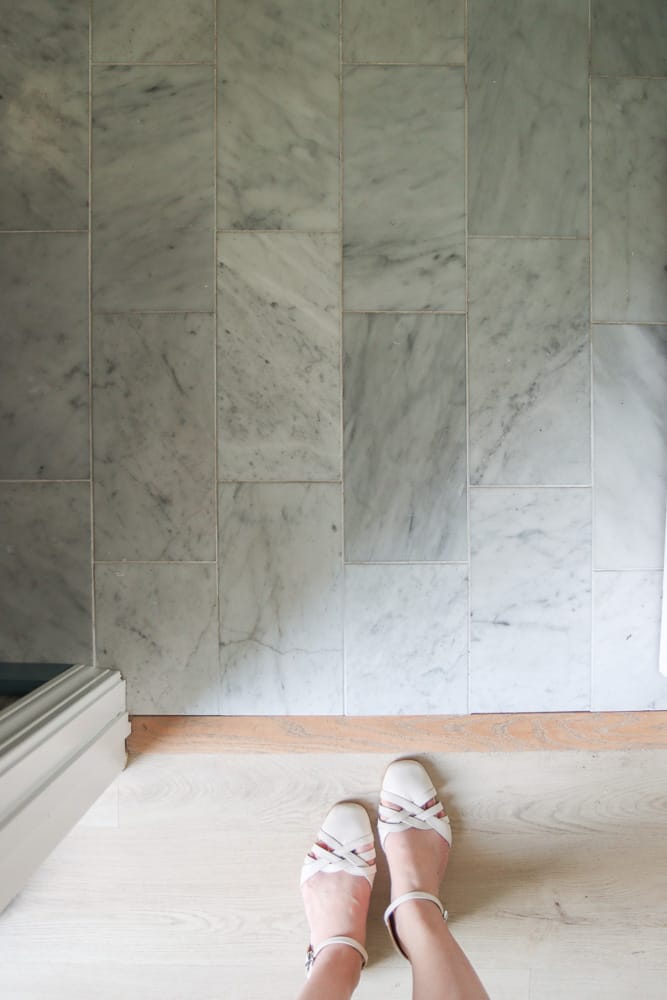
Choose the right type and quality of marble tile grout
The last factor to consider when choosing grout color for marble tile is the type and quality of grout. There are different types of grout available in the market, the common ones are cement-based grout and epoxy grout.
Here are some examples of how each type of grout performs with marble tile:
Cement-based grout
Cement-based grout is the most common and affordable type of grout, and is probably the default product your tiler would use.It is made of cement, sand, water, and sometimes additives such as latex or acrylic. It is easy to apply and comes in many colors. However, cement-based grout is also porous and prone to staining, cracking, shrinking, fading,and mold growth.
It requires sealing to protect it from moisture and dirt. It can also scratch or damage sensitive surfaces such as polished marble.
Additionally, deciding between sanded and non-sanded grout can make a difference in the final outcome and longevity of your marble-tiled space.
Generally, non-sanded grout is recommended for marble tiles since it’s gentler and less likely to scratch the delicate surface. However, if your grout lines are wider than 1/8 inch, using sanded grout may be necessary to prevent cracking and improve the overall durability.
Epoxy grout
Epoxy grout is made of epoxy resin and hardener. It is more expensive and harder to apply than cement-based grout. Since I tried out epoxy grout a few years ago, I’ve fully converted to epoxy grout for any future projects.
Epoxy grout is also more durable and resistant to staining, cracking, shrinking, fading, and mold growth.
It does not require sealing which is a bonus. However, when you are installing marble tiles, you’ll likely want to seal them to protect the porous surface, so the grout will be sealed at the same time without extra effort.
Personally, I still prefer using epoxy grout for my marble tiling projects. As someone who is not on top of cleaning, stain resistance and durability are very important to me, especially considering that I’ve already invested a ton of money on hiring a tiler and buying the marble tiles.
For epoxy, my favorite brand is Mapei as it is readily available and offers over 40+ colors. The epoxy grout is more expensive than cement based grout, but in the grand scheme of cost, if adding a little more money can really improve the quality of the outcome so it’s worth it.
If you are on a tight budget you can choose the epoxy grout powder rather than the premixed grout.
If you are DIYing the tiling project, a pre-mix grout makes it so much easier to use it right away without mixing it. Besides, you can save the leftover grout for up to a year so you can use it for any touch-up or other tiling work.
Best grout colors for marble tile summary
Choosing grout color for marble tile is often the last step of creating a beautiful tiled surface to enhance your home during a remodel. And I hope this post has helped you to get some ideas on how to choose the right grout color for your marble tile during a home renovation.
As someone who has used various marble tiles for my home renovation, I’ve definitely developed my preference over the years. So here’s my go-to formula:
I first choose a grout color that matches with your marble tile base color, ideally one shade darker. For the grout I personally like epoxy for its durability, and ideally pre-mixed to save time and hassle.
So there you have it! If you have any questions or comments, please feel free to share them with me.
Pin it for later
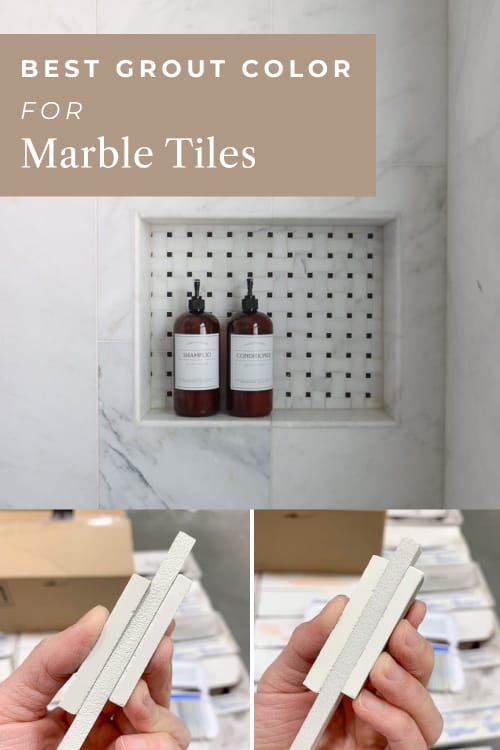
Related posts
How much does marble countertop cost? 3 pricing model explained
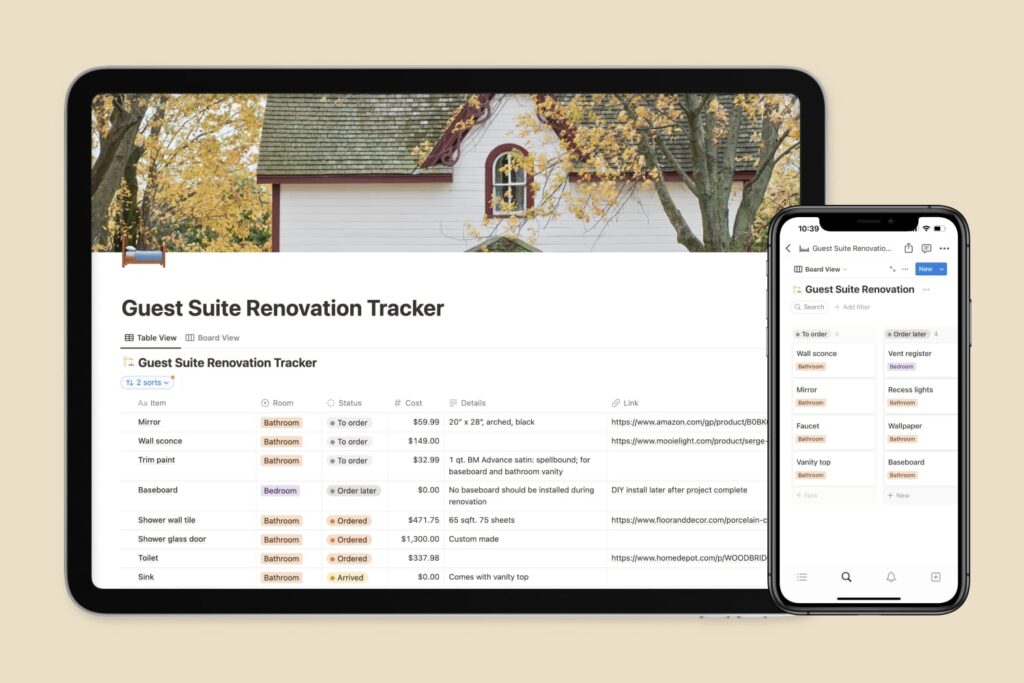
I’m having a slate look 12×24 porcelain tile intalled for the floor my 10’x 6′ bath. I settled on a 30/70 offset but I can’t decide whether they should be layed with the length of the room or the width. The vanity is a console on legs placed along the 10′ wall. The shower is at the end of the room but will be a warm white marble mosaic. Care to weigh in?